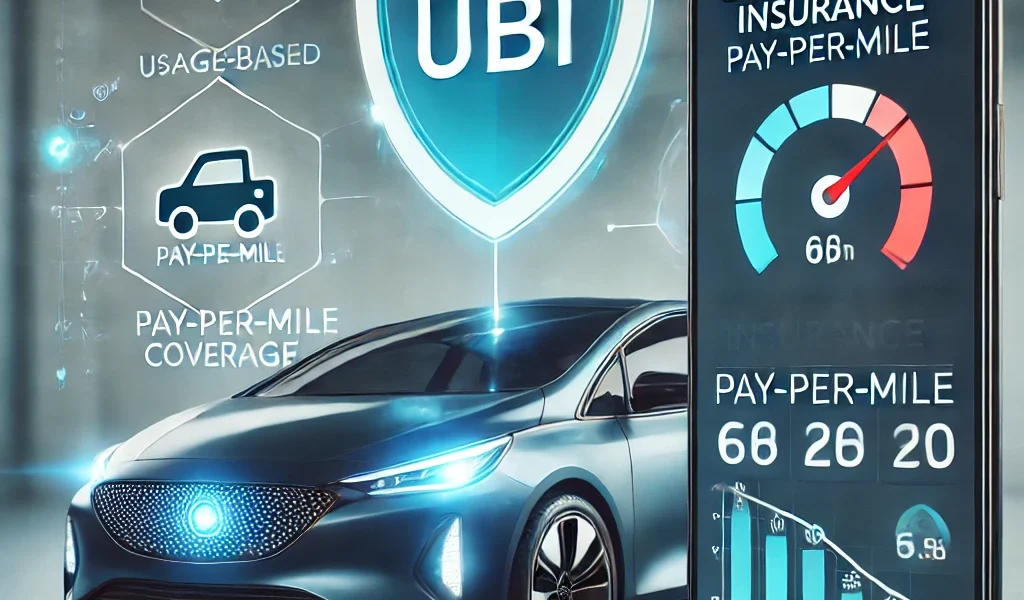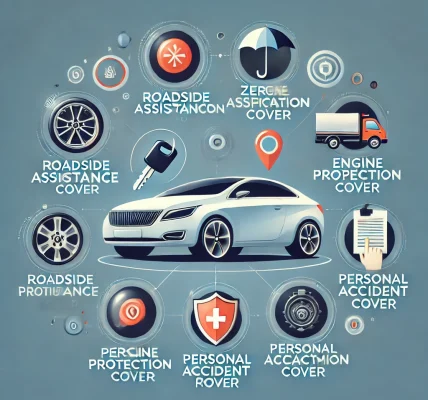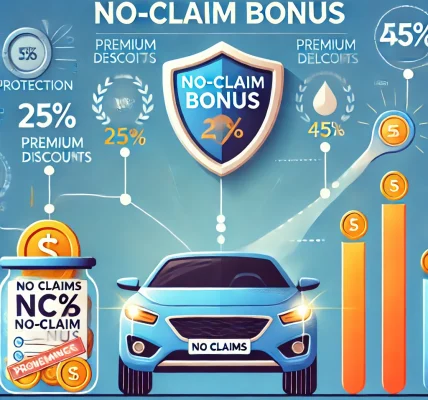Car insurance has evolved significantly in recent years, offering more flexible and cost-effective options tailored to individual driving habits. One such innovation is Usage-Based Insurance (UBI), specifically Pay-Per-Mile coverage, which allows drivers to pay based on how much they actually drive. But is this type of insurance right for you?
In this comprehensive guide, we’ll explore how Usage-Based Insurance (UBI) works, its benefits and drawbacks, and whether it fits your driving habits and budget.
What is Usage-Based Insurance (UBI)?
Usage-Based Insurance (UBI) is a type of car insurance that bases your premium on your actual driving behavior rather than traditional risk factors like age, gender, and credit score. The most common form of UBI is Pay-Per-Mile Insurance, which charges you based on the number of miles you drive.
How Does Pay-Per-Mile Insurance Work?
Pay-Per-Mile insurance consists of two main components:
- A Base Rate – This is a fixed monthly cost that covers essential liability and administrative expenses.
- Per-Mile Charge – A variable rate that depends on the number of miles you drive each month.
For example, if your base rate is $30 per month and your per-mile charge is $0.05 per mile:
- Driving 500 miles in a month would cost $30 + ($0.05 × 500) = $55.
- Driving 1,000 miles would cost $80.
A small tracking device or a mobile app records the number of miles driven, ensuring accurate billing.
Who Can Benefit from Pay-Per-Mile Insurance?
Pay-Per-Mile insurance is ideal for specific types of drivers. If you fall into any of the following categories, this coverage might be right for you:
1. Low-Mileage Drivers
- If you drive less than 10,000 miles per year, you may save significantly compared to traditional insurance.
2. Remote Workers or Stay-at-Home Individuals
- If you work from home or rarely drive, you won’t be paying for coverage you don’t use.
3. Retirees or Occasional Drivers
- Those who drive occasionally for errands or short trips can benefit from lower costs.
4. Public Transport Users
- If you primarily use buses, trains, or bikes but own a car for occasional use, pay-per-mile insurance makes financial sense.
5. Secondary or Weekend Vehicles
- If you own a second car that is rarely driven, you won’t have to pay full-price insurance rates.
Advantages of Pay-Per-Mile Insurance
1. Cost Savings
- If you don’t drive much, your premiums will be significantly lower than traditional policies.
2. Fair Pricing Model
- Traditional insurance charges fixed premiums regardless of how much you drive, whereas pay-per-mile ensures you only pay for what you use.
3. Encourages Safer Driving
- Many UBI programs also track driving behavior, rewarding safe drivers with additional discounts.
4. Environmentally Friendly
- Encourages reduced driving, which helps lower carbon emissions and fuel consumption.
5. No Credit Score Impact
- Some insurers rely less on credit scores when determining rates, making it a good option for those with lower credit scores.
Potential Drawbacks of Pay-Per-Mile Insurance
While this insurance model works well for many, it may not be suitable for everyone.
1. Not Ideal for Long-Distance Commuters
- If you drive a lot, especially for work, pay-per-mile coverage could cost more than traditional insurance.
2. Requires Tracking
- Mileage tracking is required, either through a mobile app or a small device installed in your car.
3. Limited Availability
- Not all insurance providers offer pay-per-mile options, and availability varies by state.
4. Higher Costs for Unexpected Travel
- If your driving habits change (e.g., a new job with a longer commute), costs can rise unexpectedly.
How to Choose the Best Pay-Per-Mile Insurance Provider
If you think pay-per-mile insurance might be a good fit, follow these steps to choose the right provider:
1. Compare Rates from Multiple Companies
- Look at base rates and per-mile charges to find the most cost-effective plan.
2. Check for Additional Discounts
- Some providers offer safe driving discounts or bundling options with homeowners or renters insurance.
3. Review Tracking Methods
- Ensure you’re comfortable with how mileage is tracked (app vs. device).
4. Read Customer Reviews
- See what other policyholders say about the insurer’s customer service and claims process.
Top Insurance Companies Offering Pay-Per-Mile Coverage
Several companies specialize in usage-based car insurance. Some of the most popular include:
- Metromile – One of the pioneers in pay-per-mile insurance, offering competitive rates for low-mileage drivers.
- Allstate Milewise – A well-known insurance provider offering pay-per-mile plans.
- Nationwide SmartMiles – A flexible option for drivers who want variable pricing based on miles driven.
- Liberty Mutual ByMile – Another pay-per-mile option with a strong reputation.
Is Pay-Per-Mile Insurance Right for You?
If you drive less than 10,000 miles per year, Pay-Per-Mile insurance can be a cost-effective solution. However, if you drive frequently or take long road trips, a traditional insurance plan may be a better choice.
Ask Yourself These Questions Before Switching:
✅ Do I drive fewer than 10,000 miles per year? ✅ Am I comfortable using a tracking app or device? ✅ Do I have a predictable driving routine? ✅ Would I benefit from a flexible payment model?
If you answered yes to most of these, then pay-per-mile insurance could save you money while ensuring you’re fully covered.
Final Thoughts
Usage-Based Insurance, especially Pay-Per-Mile coverage, is an innovative way to reduce insurance costs for low-mileage drivers. With the right provider and careful consideration of your driving habits, you could save hundreds of dollars per year while maintaining full coverage.
If you’re interested in switching, compare quotes from multiple providers, check their tracking methods, and ensure the coverage meets your needs.
🚗 Thinking about switching to Pay-Per-Mile insurance? Get a free quote today and start saving!




